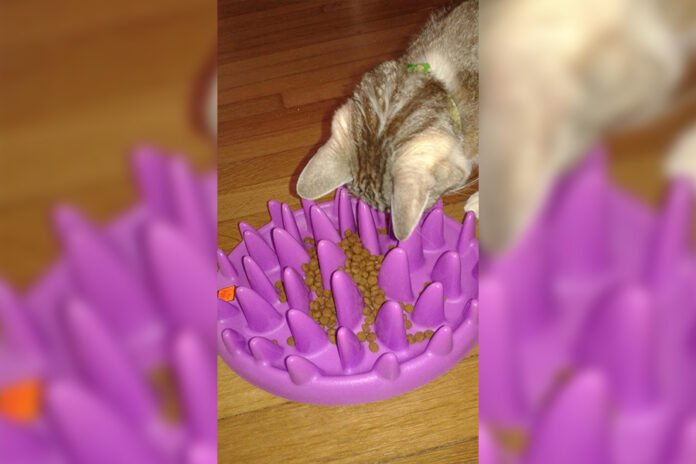Utilizing food puzzles may help increase cat welfare
Although cats are commonly known as low maintenance pets, there are still important factors owners have to consider when taking care of their animals. According to Mikel Delgado, a postdoctoral researcher at the School of Veterinary Medicine at UC Davis, food puzzles can allow cats to express their natural behaviors within the home environment. In her recent study conducted with other UC Davis researchers called “A survey of feeding practices and the use of food puzzles in owners of domestic cats,” 30 percent of surveyed cat owners were found to use food puzzles for feeding their pets while 18 percent no longer used them.
Since many cats are kept inside of the house, some may begin to lack the exercise and mental stimulation that they would normally acquire in the wild.
“All of their senses are very well developed to make them good hunters, and so by keeping them indoors, we’ve really restricted their abilities to engage in those natural behaviors,” Delgado said.
According to Tony Buffington, a clinical professor in the Department of Epidemiology and Medicine at the UC Davis School of Veterinary Medicine, although there are many healthy diets on the market for cats, there is less research done on how to feed cats in accordance with their natural hunting and activity needs. Delgado explained that cats’ bodies are naturally attuned to hunting small rodents and birds and are used to eating multiple small meals a day. She added that households with multiple cats should feed them in separate areas, as it is not part of their nature to share food and may increase stress.
“By providing them choice in how to eat, and eat in a more natural fashion, we can positively affect their welfare by helping to decrease any stress that they may be encountering while eating,” said Melissa Bain, a professor of medicine and epidemiology at UC Davis.
In order to introduce cats to food puzzles, Buffington emphasized the importance of the cat’s feeling of safety, as they are both a prey and predator species. In addition, cats require predictability, such as a routine, as well as choices within their environment. He recommended that owners choose cat foods that they prefer while also giving their cats a variety to choose from to satisfy both parties.
“Then [the owners] know that the cat has preferences and can show the owner what they are,” Buffington said. “So that really helps owners understand how to interact with cats.”
Once these components are established and the cat is healthy, owners can begin to introduce food puzzles to the cats. Owners can choose from a variety of different puzzles differing in mobility and difficulty. They also have the option of making their own devices such as from toilet paper rolls or plastic bottles. Delgado created a website with her friend as a resource for owners to determine what food puzzles best fit their individual cat’s needs. Buffington recommended placing these food puzzles in nonthreatening areas and making their use obvious such as leaving a trail of food coming out of the devices. He stated that when introducing food puzzles, along with improving cat welfare in general, it is best to start easy in order to prevent the cat from feeling overwhelmed. Bain added that though the eventual goal is for the cat to be able to eat all of its food through such foraging techniques, owners should gradually switch between bowl feeding and food puzzles in order to minimize stress.
“There’s no rush on these things and so I always tell people to pick the one thing they’re most interested in and start there and they’ll learn about their cat in the process,” Buffington said. “Once they get that, then every next thing that they want to try is going to be easier.”
Buffington stated that he and Delgado are actively researching how cats use food puzzles in different environments, such as when they are with a cat they get along with or a cat they do not get along with. Through utilizing videotape analysis of the cats in homes, they hope to provide more developed recommendations for how owners should proceed in these situations. Delgado also stated that their next steps would be to further understand the effects of food puzzles on cats’ behavior and health and if they truly improve their welfare.
“Cats are intriguing animals that have some unique behaviors that are not as well understood as other animals’ behaviors,” Bain said. “They are also very commonly kept as pets in the United States and we would like owners to have as much information to provide them the best welfare possible.”
Written by: Michelle Wong –– science@theaggie.org




